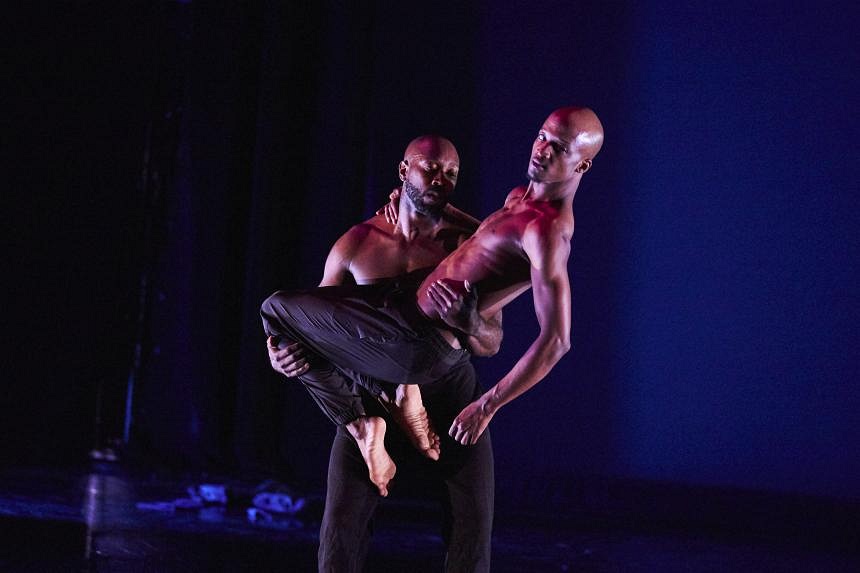aMoratorium
J’Sun Howard
Esplanade Theatre Studio
Jan 17, 8pm
The modern struggle to unpack masculinity took centre stage in aMoratorium as dancers Dedrick “D. Banks” Gray and Timothy “Solomon” Bowser performed a 50-minute duet.
Choreographed by Chicago-based dancemaker J’Sun Howard, the piece looks at black masculinity through the lens of society, hip-hop and the church. Topics of racial injustices, police brutality, internalised homophobia and self-acceptance were also part of the routine, with narrative arcs split between Gray and Bowser.
Blending modern dance with African tribal routines and splices of hip-hop, Howard’s storytelling shines through. Working with sound design from DJ Jared Brown, he breaks convention by having the dancers perform some of their gentlest and most emotional moments to a backdrop of intense rap.
Part of the M1 Singapore Fringe Festival, the work was commissioned by the Art Institute of Chicago in 2018 in response to a retrospective of black visual artist Charles White (1918 to 1979), known for chronicling African-American subjects in paintings, drawings, lithographs and murals.
aMoratorium focuses on the journey of two men at different stages of their unpacking of masculinity and their varied experiences.
While one of the men (portrayed by Bowser) is clearly further along in his exploration of gender and masculinity, he also explores the more difficult journey of reckoning with police brutality against men of colour. As an edited and distorted speech from Netflix’s drama Rodney King (2017) plays, Bowser re-enacts an unjust shooting.
Gray, taking on the role of a more traditionally accepted male, attempts to resolve an inner conflict rooted in a hidden queer identity, performing choreography influenced more by African tribal dances and hip-hop.
A nursery rhyme is sung in Yoruba – a language spoken in West Africa – twice by a girl in the show. Accompanied by tribal influences in choreography, the piece takes on a deeper historical meaning of what masculinity looks like in the original cultures of black men.
The simplicity of the stage – the only decorations are a cloth tree extending to the ceiling and a pair of light blue sneakers hanging from the rafter lights by the shoelaces – allows the dancers to roam the space in their exploration of identity and self.
In an era when toxic masculinity is rampant and being challenged, the existence of dances like aMoratorium provides a safe space for the audience to re-examine and refine their perceptions of what being masculine entails, as well as how to unpack that in an Asian society.

